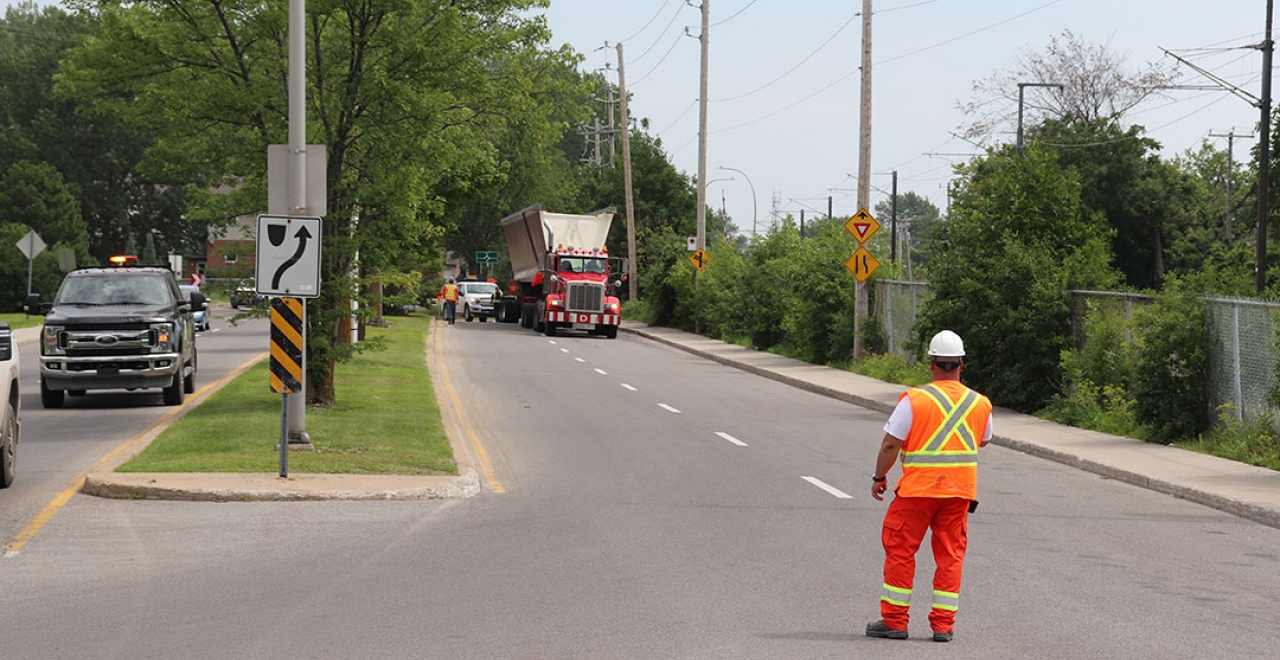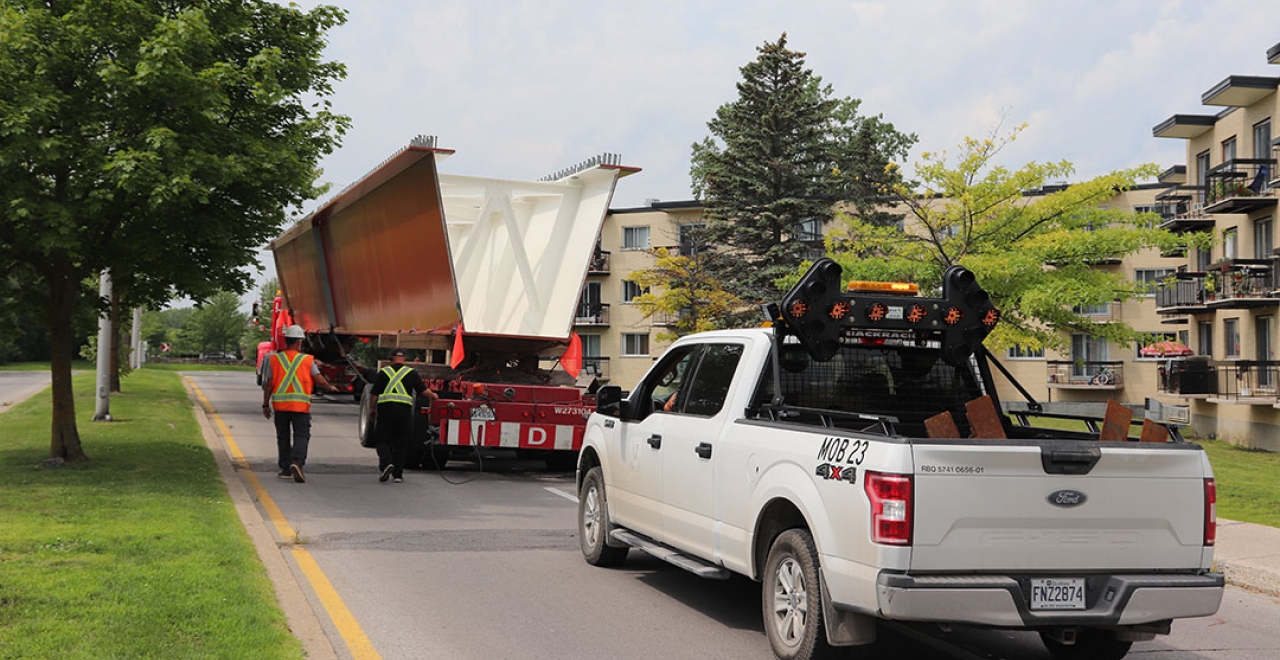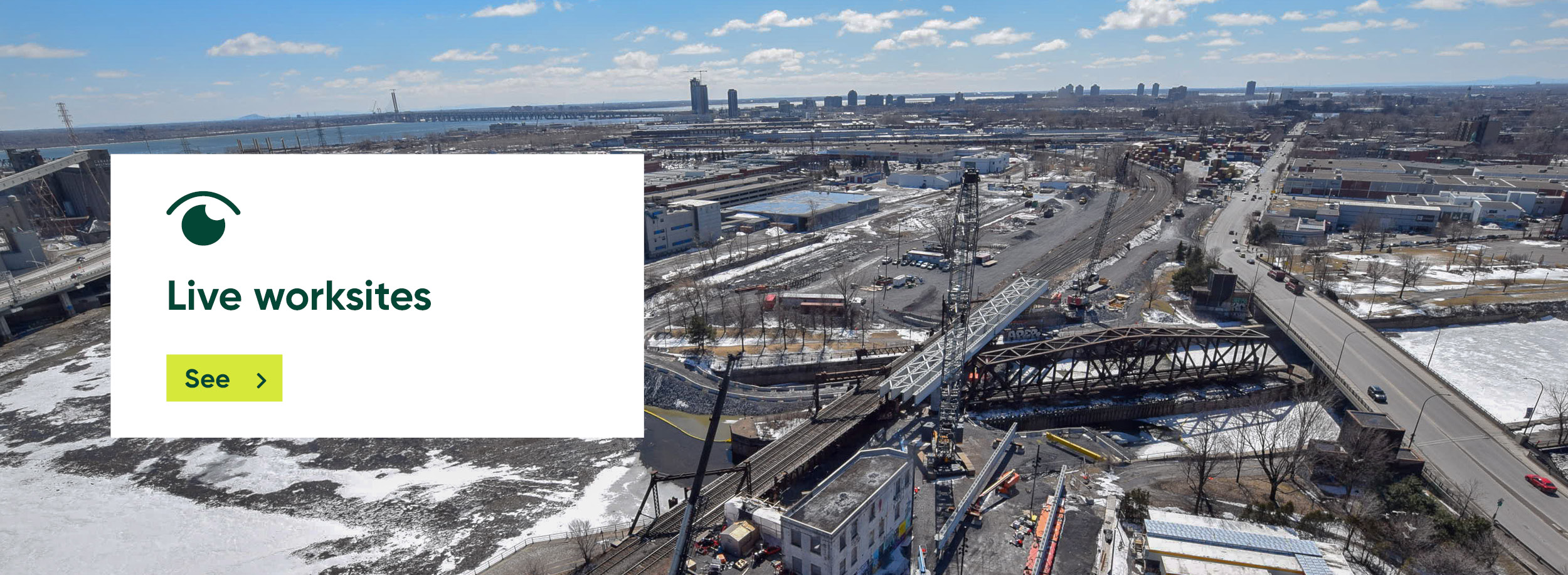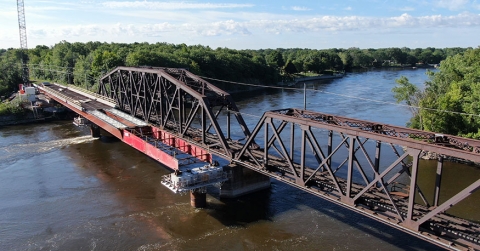
Unconventional technique for building a bridge on the North Shore: The counterweight launching method explained
REM is picking up the pace of its work on the North Shore of Montréal with a view to the commissioning of the brand-new light rail system in 2023. Among the work in progress is the construction of a new railway bridge linking Montréal and Îles Laval over the Rivière des Prairies.
To ensure the integrity of the infrastructure over which the REM will operate for the next 100 years, it was necessary to build a new twin bridge, which will be located east of the existing infrastructure. Construction crews started the foundations in 2019, and are currently working on installing the bridge’s box girders. Close-up on the special “launched bridge” method of construction used to build this rail link.
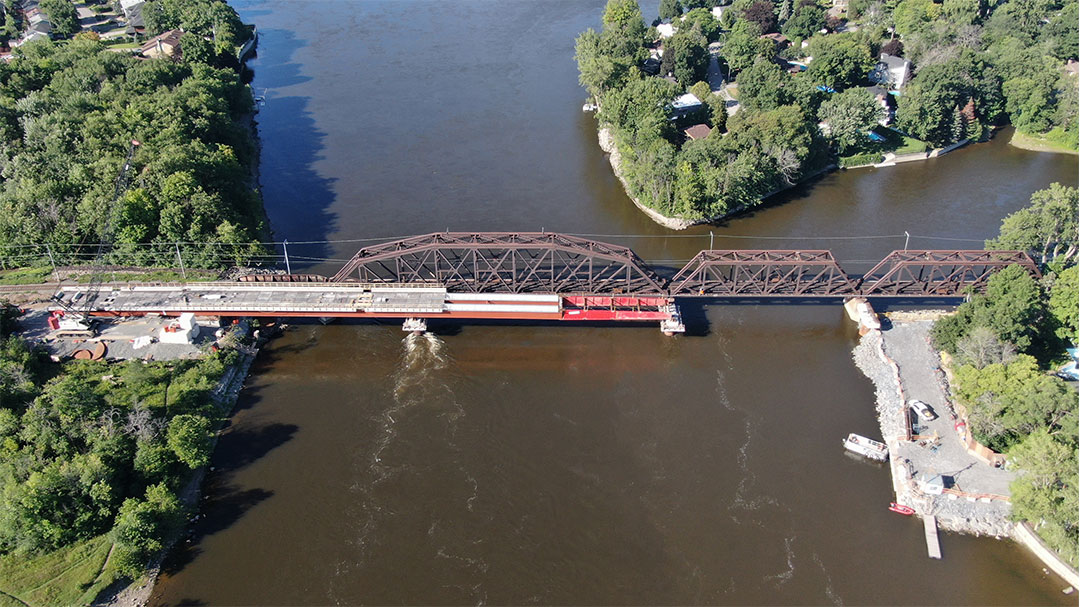
How does launched bridge technology work?
Conventionally, building a bridge requires the construction of river piers or the use of barges to support cranes, which can be difficult. That’s where the launched bridge method comes in!
In all, the Rivière des Prairies railway bridge consists of three spans (span = the distance between two bridge piers). The spans are each 30 metres long , except for the span across the river, which is 60 metres long. Using the bridge launching method, placing the bridge girders on the piers can be carried out quickly while limiting the risks associated with working in Rivière des Prairies currents.
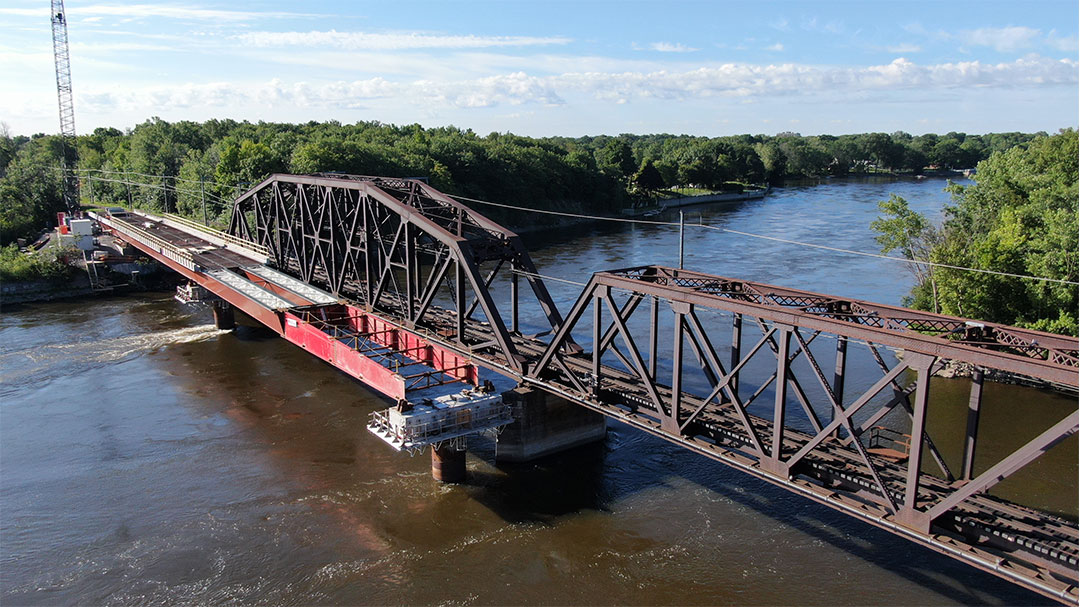 Progression of the Rivière des Prairies bridge structure from Montréal to Îles Laval.
Progression of the Rivière des Prairies bridge structure from Montréal to Îles Laval.
The counterweight launching method includes the following steps:
- The bridge components are assembled behind one of the river abutments.
- Counterweights are installed at the back of the assembled structure to control the tipping point.
- Launching begins and the structure, supported by rollers, is pushed toward the opposite bank by means of a hydraulic system using steel cables to pull the box girders simultaneously.
- The structure is carefully guided throughout the launch.
- When there is as much weight at the back as at the front of the main support, the counterweights are removed.
- The structure tips until the two ends of the launching nose girders are exactly centred on their supports.
- Subsequent girders are assembled on the deck from the initial shoreline and steps 2 to 6 are repeated.
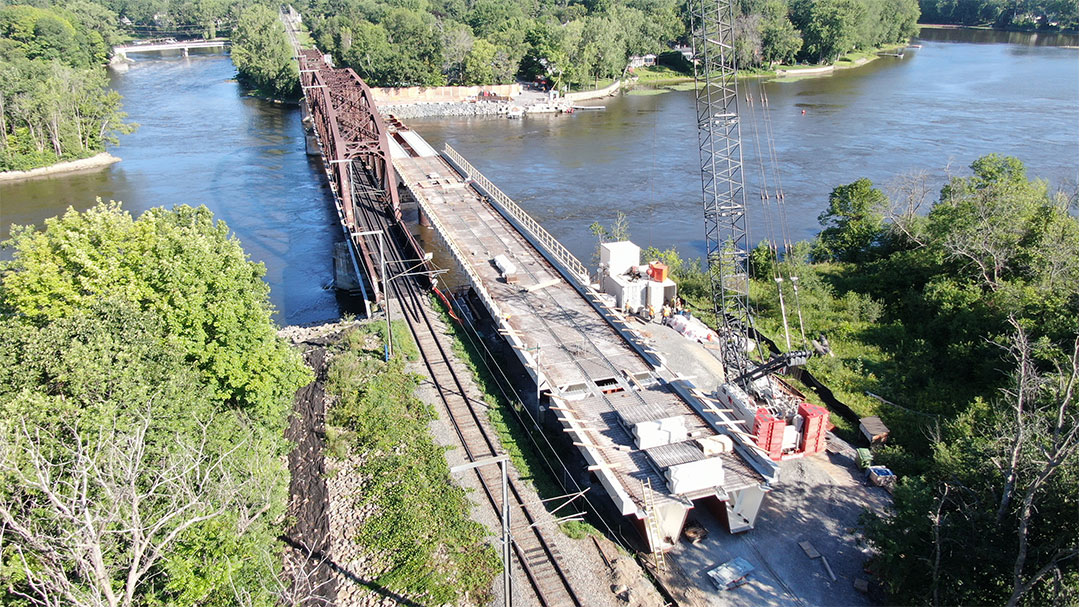 Behind the abutment, the structure can be assembled prior to launches.
Behind the abutment, the structure can be assembled prior to launches.
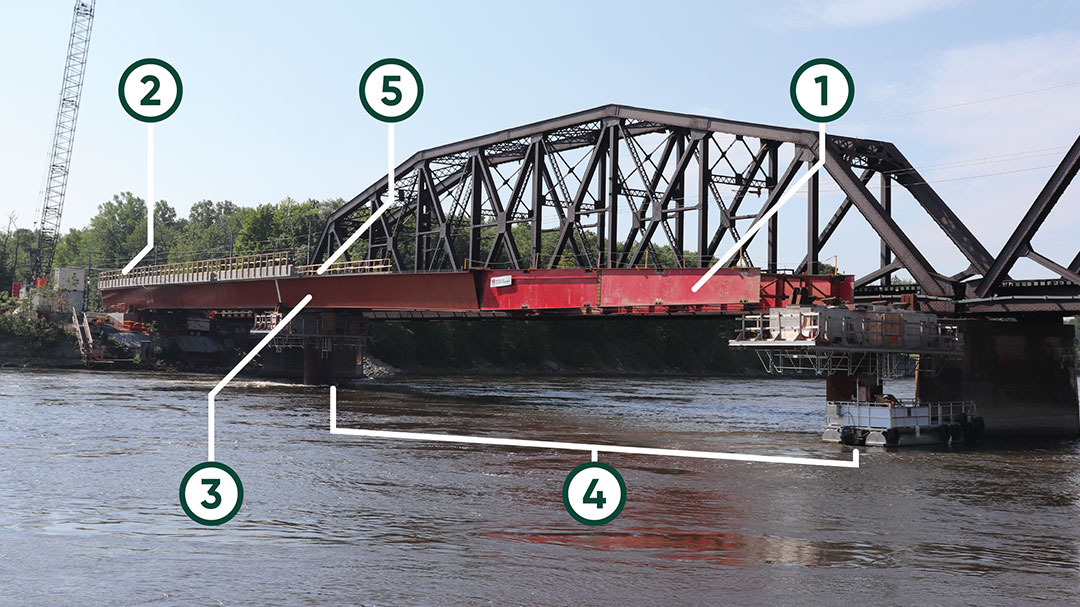
Components of the launched bridge :
- Steel launching nose: Lighter girder section with variable inertia installed at the front of the structure to minimize the stress on the structure being launched.
- Counterweights: Weights installed at the back of the assembled structure to control the tipping point.
- Girder: Horizontal support element.
- Span: Part between two bridge piers.
- Location of the deck: Supporting structure on which the rails lie. It is this structure that supports the traffic loads and transmits them to the supports.
In the case of the Rivière des Prairies bridge, five launches ranging from 12 metres to 60 metres were carried out—on average one per week—to reach the opposite shore.
The bridge now rests on its permanent supports following this six-week operation. The next step will be the dismantling of the launching nose in order to install the deck.
